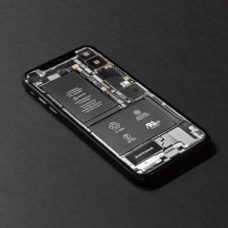At this point, there’s no shortage of prototype quantum computing systems that all vie for market viability.
At the heart of each of these systems are qubits, the elementary component of quantum processing systems, which come in different types.
Engineers were even able to create controllable qubits based on trapped ions, or charged atoms.
They also showed the potential of superconductor-based qubits in building complex quantum processors.
However, none of these experimental quantum architectures can overcome one giant hurdle: temperature.
Diamond-Based Qubits for Room Temp Quantum Hardware
Because qubits’ power only functions in ultracold environments, any large-scale dreams fall to the wayside.
For qubits to operate at room temperature, there must be quantum hardware that enables direct monitoring of their quantum states.
Researchers at the University of Pennsylvania toyed with electron spins, which make the basis for several technologies like quantum spintronics and photonic computing.
To build a 2D platform for quantum information processing they used isolated electron spins in diamonds and were “able to optically detect the system’s quantum states”.
Read More: Meet The Quantum Fridge That Won’t Cool Your Beer
In fact, engineers at Penn’s School of Engineering and Applied Science (SEAS) used the defects that naturally occur in the crystalline structure of diamonds.
These defects, where engineers trap the spins, act like isolated atoms or molecules, or qubits, and “interact with light in a way that enables their spin to be measured and used as a qubit”.
This spin-based hardware platform facilitates quick initialization and readout of qubits.
Unlike other proposed architectures, such systems operate at room temperatures.
But engineers can’t work with bulk diamonds.
“One disadvantage of using spins in 3D materials is that we can’t control exactly where they are relative to the surface. Having that level of atomic-scale control is one reason to work in 2D… When the spins are confined to a single atomic plane, you enable a host of new functionalities,” explains SEAS’ Lee Bassett, lead researcher.
When 2D materials are brought up, we may quickly think of graphene. However, this wonder material doesn’t fit the bill in this case.
Annemarie Exarhos, co-leader of the study, explains:
“Here we care more about the electronic properties of the crystal than what type of atoms it’s made of. Graphene behaves like a metal, whereas diamond is a wide-bandgap semiconductor and thus acts like an insulator.”
Besides demonstrating potential quantum architectures, the study also pushes research into 2D materials physics. It brings the two fields together “to say ‘here’s a potentially room-temperature quantum architecture in a 2D material.’”



















Comments (0)
Most Recent